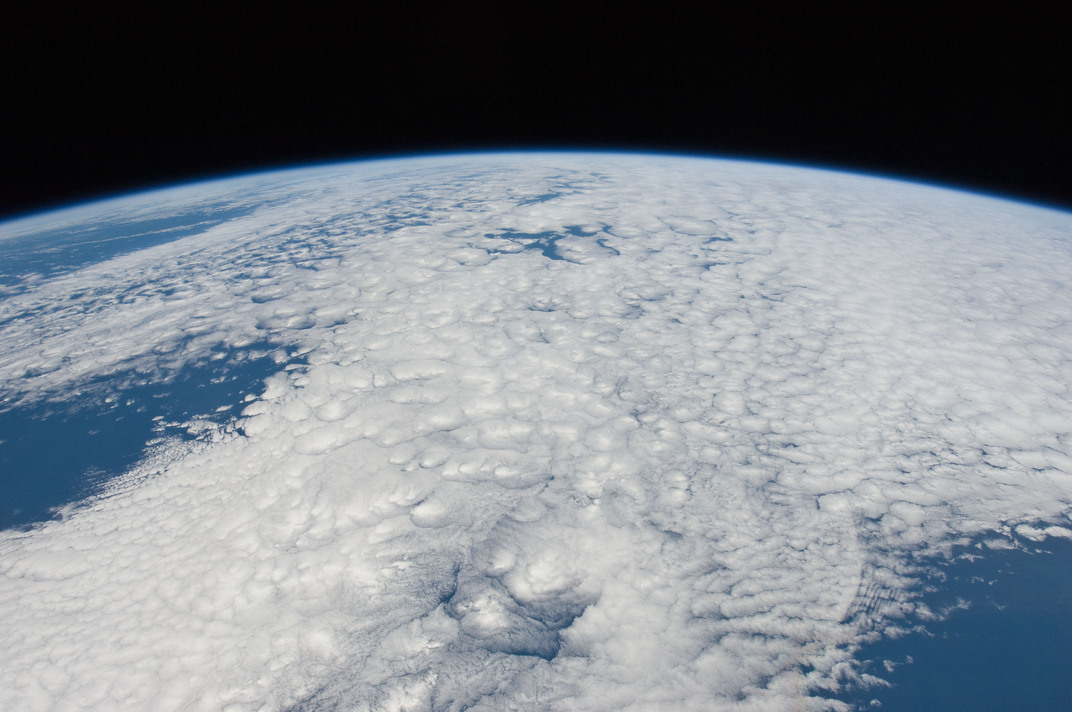
Stratocumulus clouds over the South Atlantic photographed from the ISS (ISS30-E-20366) Image courtesy of the Earth Science and Remote Sensing Unit, NASA Johnson Space Center.
Stratocumulus clouds are an important regulator of the Earth's climate, covering large areas of ocean off the Western coast of continents. As they are much brighter than the ocean beneath them, they increase the average reflectivity of the Earth, acting as a cooling influence on the climate [1].
They are typically low, often within a kilometre of the ocean surface. The height of the cloud top is determined by a sharp temperature change over a thin layer known as an 'temperature inversion'. The temperature inversion can be a little as 5m thick, which makes the clouds challenging to simulate in atmospheric models [2].
| [1] | Wood, Stratocumulus Clouds. M. Weather. Rev., 2012 |
| [2] | Mellado et al., DNS and LES for Simulating Stratocumulus: Better Together. J. Adv. Mod. Earth. Sci., 2018 |